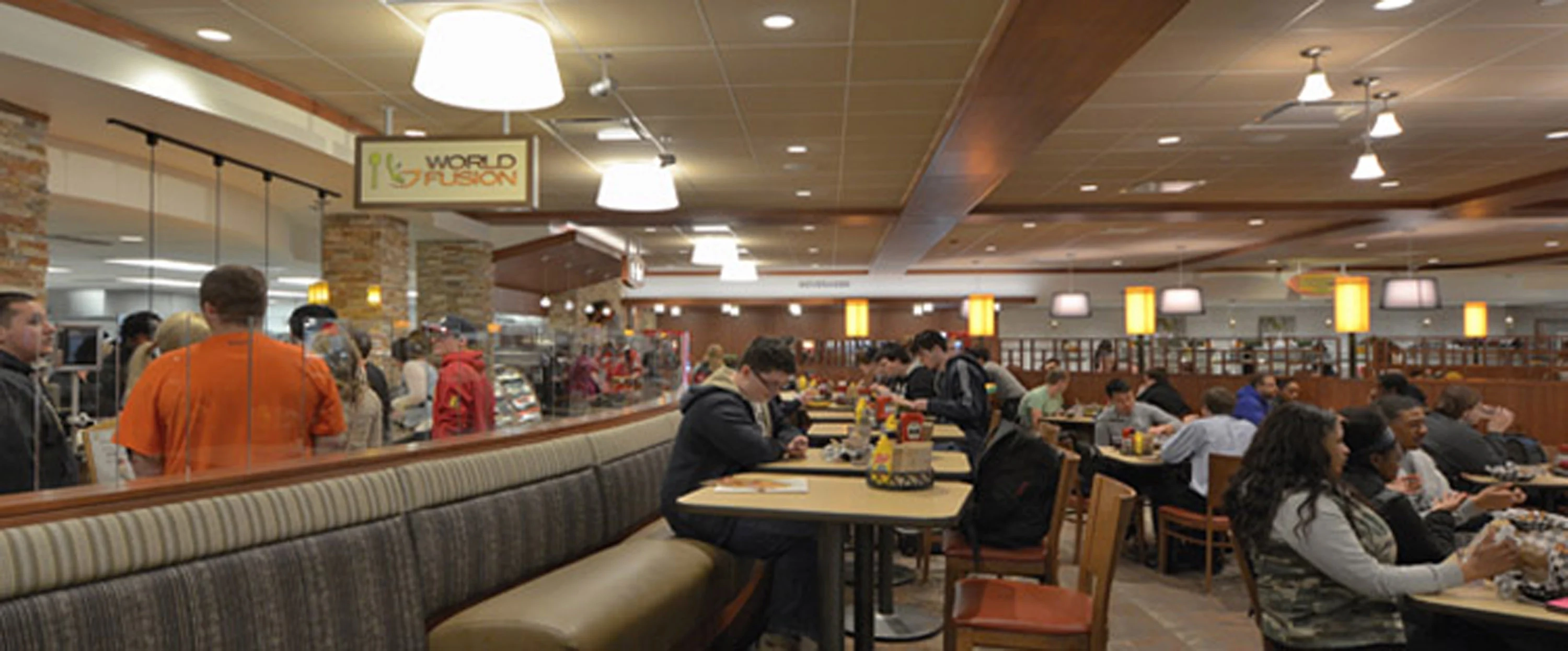
There are many factors to consider when renovating or designing kitchen and dining spaces. First of all, the type of space can vary from student dining halls to cafeterias in a nursing or healthcare facility, to high-end restaurants or to coffee shops, and each come with their own set of challenges and rewards.
Occupant comfort, lighting, controls and proper ventilation are all vital to the successful operation of a food service facility. All require careful consideration when it comes to MEP design engineering. Some MEP solutions include incorporating variable volume exhaust hood systems, high-efficiency chillers, condensing boilers, variable-flow pumping systems, outdoor air energy recovery system, low-flow plumbing fixtures, high-efficiency lighting systems, and outdoor air delivery monitoring.
Here are the top four MEP considerations, when choosing MEP design services for your food services space:
Choosing the right commercial kitchen exhaust and make-up air system can have a major impact on energy consumption and costs and can account for up to 50% of the HVAC load. In order to effectively tackle this challenge, the MEP engineer and the design team must work together to determine the proper sizing and location of exhaust hoods and make-up air units.
Choosing the right lighting fixtures and layout for your dining space can be challenging, especially considering the various functional needs within your dining and kitchen spaces. Down lighting can be beneficial to both patrons and dining staff in serving as task lighting and ambient lighting. LED systems with minimal output can effectively achieve results that are both functional and decorative. Pendant lights and specialty lamps can create a more intimate setting within your dining facility. Technically sophisticated yet easy to use and concealable controls can be implemented using touch screen panels or wireless hand held remotes, allowing staff to adjust the functionality and ambient environment based on need and the occasion and even, different the various seasons. By calculating the required luminance of your space, it can help the lighting control designer in determining the proper level of automation for your lighting control system.
Whether your facility is existing or new, having the proper MEP infrastructure in place can be a lifeline to maintaining your facility’s operability. Connecting to the necessary utilities like a campus chilled water plant for instance, in addition to any existing indoor air handling unit’s (AHU’s). Kitchen ventilation and exhaust systems must efficiently keep the building properly balanced and pressurized. Incorporating proper electrical service is equally important. By adding a standby generator to your building’s infrastructure, your staff and patrons can have peace of mind in case of an unexpected outage.
Occupancy comfort is of the utmost concern when it comes to MEP design for dining facilities. Dining hall occupancy can fluctuate between dining hours and time allotted to kitchen and cleaning staff preparation. Therefore, coordinating temperature and humidity controls, and incorporating occupancy-based demand controlled ventilation can be vital to reducing energy consumption and to maintaining the proper temperatures and humidity levels throughout the day.
Today, dining facilities often require complex, sustainable MEP systems. Following these simple guidelines will put you on the right track to saving energy, reducing costs, providing systems that are easier to maintain, meeting code and regulation compliances, and reaching your ultimate design goals.
The best way to help your building achieve – and sustain – high performance standards is through the commissioning process. Get your free copy of our Building Commissioning Playbook to see what commissioning can do for your building.
These Stories on Housing-Food
Comments (3)